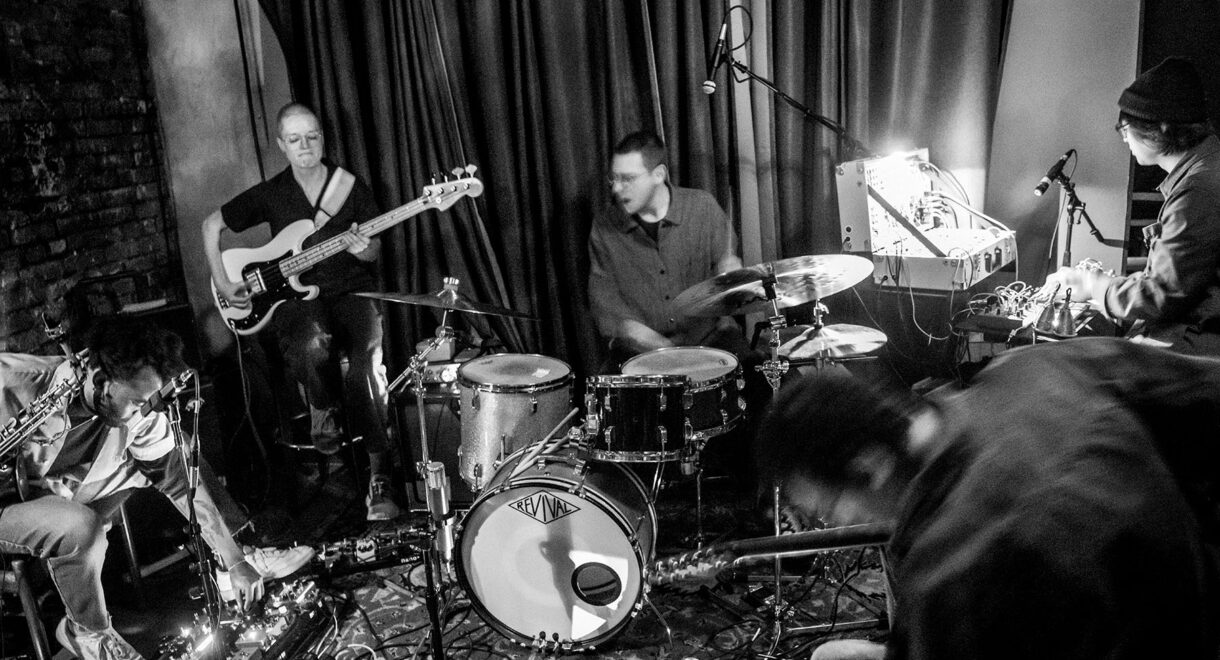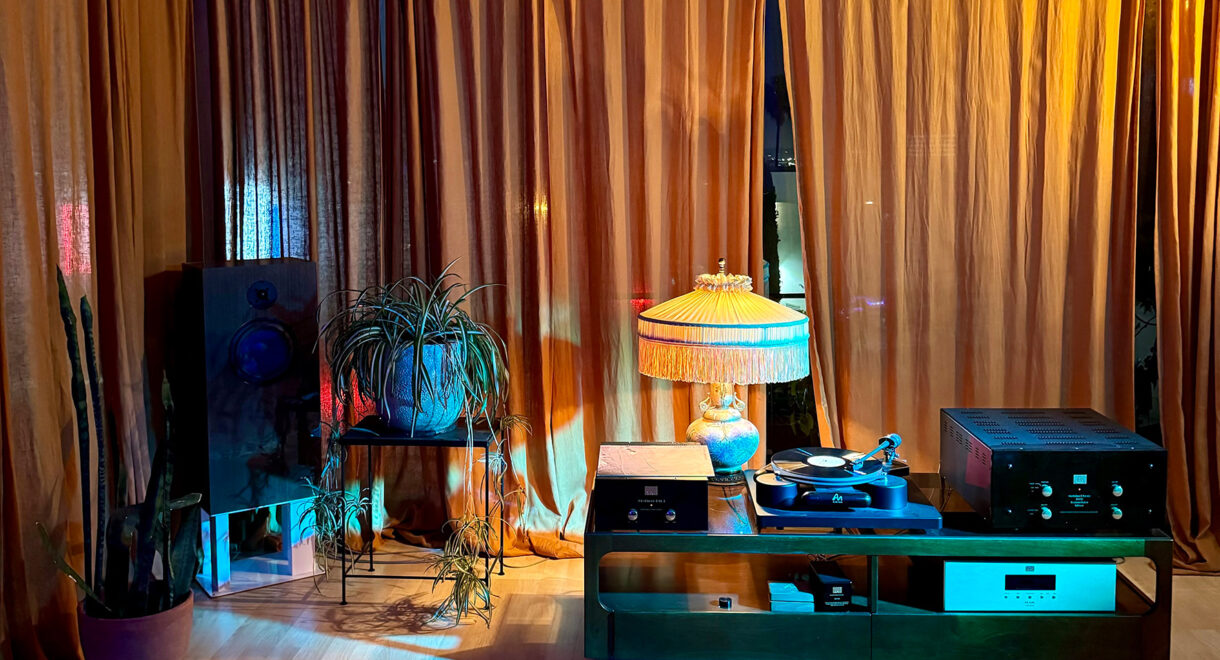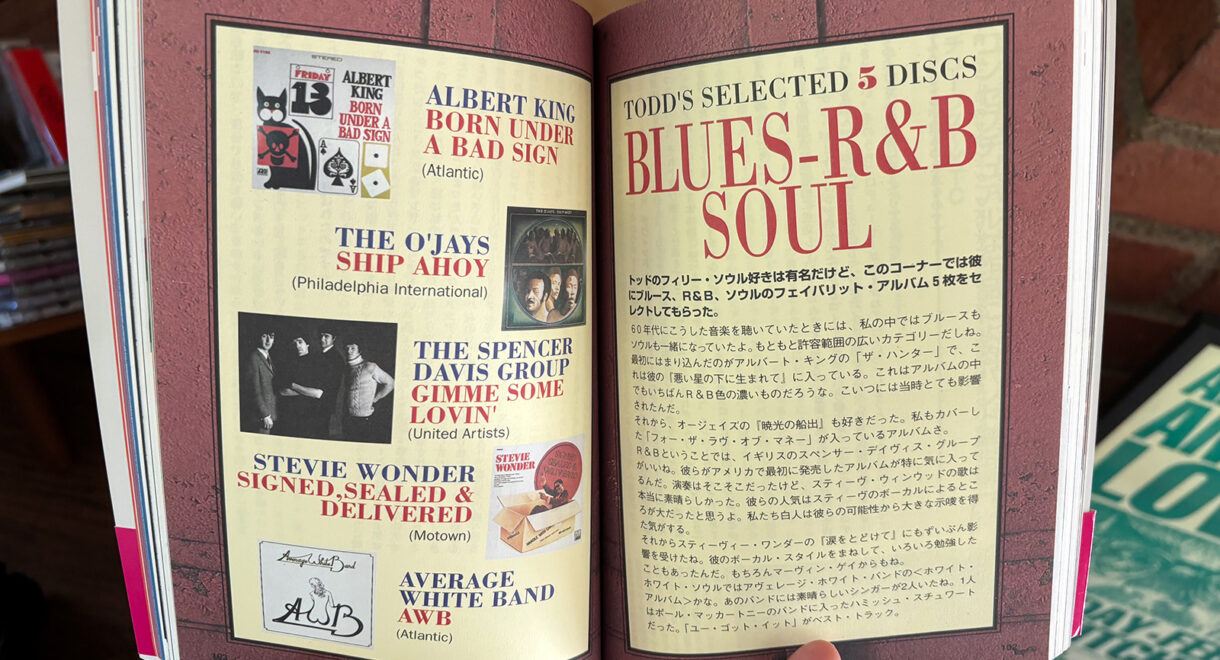Transparent clarity, deep bass, and “Invisible Sound” from German audio company ADS. Background: One of the lesser known hi-fi brands of the ’70s, ADS (Analog and Digital Systems) […]
Talking high-fidelity projects and quadraphonic sound with Rhino Records’ Patrick Milligan
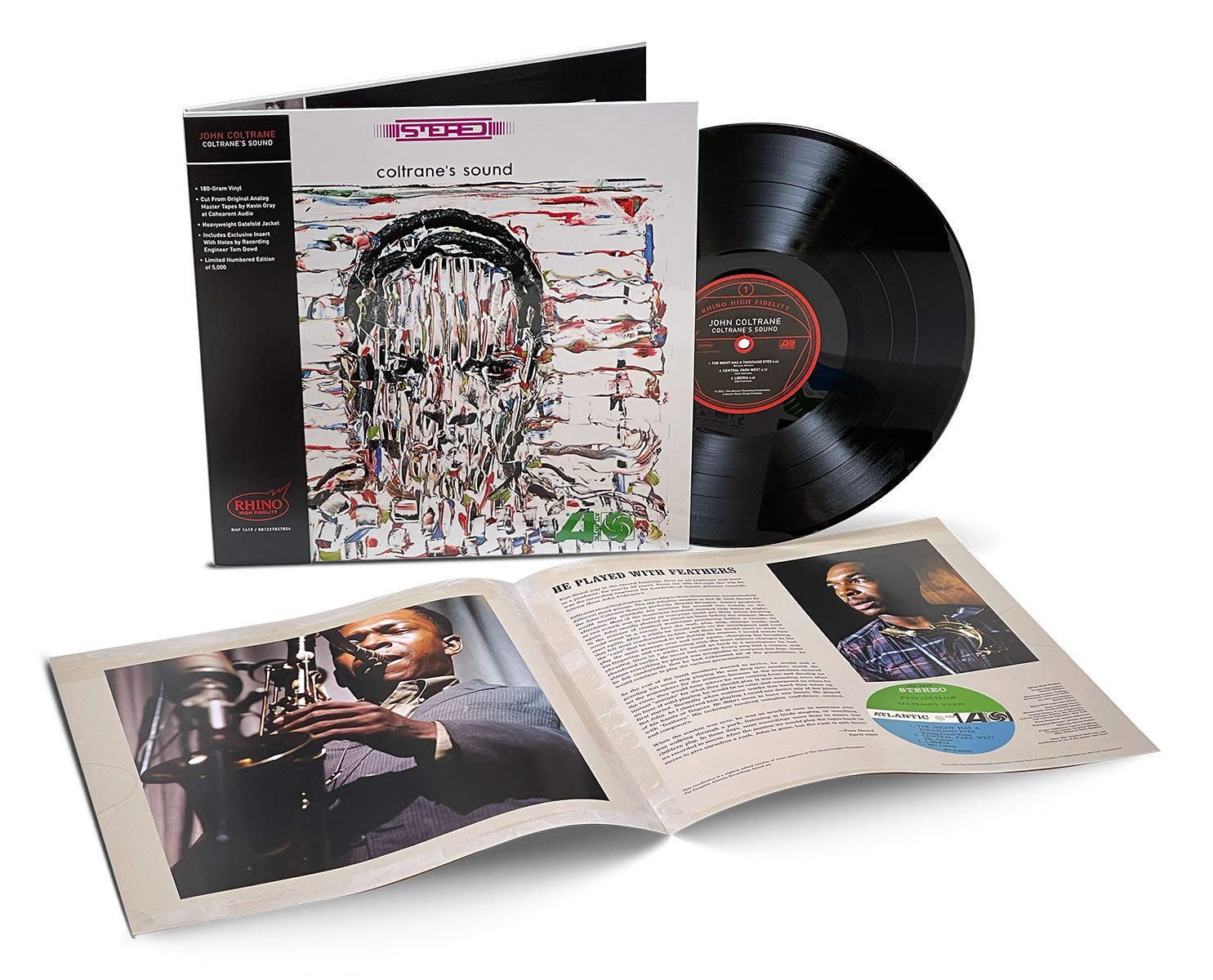
A breathtaking new vinyl version of John Coltrane’s ‘Coltrane’s Sound’ comes to the market.
Over the past five years, a growing number of specialized labels or sublabels have cropped up whose mission is to produce limited-run, no-expense-spared represses of classic albums. Created for audio obsessives whose quest for perfect vinyl copies of their favorite records has less to do with original pressings than with optimal sound, labels like Music Matters, Acoustic Sounds, and Electric Recording Company seem to have taken cues from the art and book collectors’ markets, where rarity and quality combine to create bliss (and value). The Tone Poet/Blue Note Classic series, Acoustic Sounds/Impulse/Verve series, Craft’s Original Jazz Classics reboot are a few examples of such endeavors.
A few months ago Rhino, the archival arm of Warner Music, issued the first two records from its new Rhino High Fidelity imprint. Devoted to producing remarkable albums from Warner’s massive trove of recordings, Rhino High Fidelity’s initial releases are at opposite ends of the musical spectrum: John Coltrane’s Coltrane’s Sound and The Cars, the debut album by the Boston new wave band. “These high-end, limited-edition vinyl reissues of classic albums represent the pinnacle of sound and packaging,” boasts the label on its website.
The curatorial driver of Rhino High Fidelity is Rhino senior director of A&R Patrick Milligan, who took time to hop on a call to discuss the imprint. Too, Milligan talked about Rhino’s new Quadio initiative, which has been mining the Warner archives for recordings, mostly from the 1970s, released in quadraphonic (four-channel) sound. The below conversation has been lightly edited for length and clarity.
In Sheep’s Clothing: What was the reasoning behind the launch of Rhino High Fidelity?
Patrick Milligan: Rhino Hi-Fi came about because we’ve obviously licensed material over the years to Mobile Fidelity, Acoustic Sounds, Electric in the UK – they do these $300, limited to 300-copies kind of things. We’ve never really done that, and we thought we should maybe try to get in that lane.
It was first suggested to me that we consider doing half-speed masters, and I’ve always been a little bit ambivalent about that because a lot of mastering people I talked to feel like you take a tape and you’ve got something at a low frequency that reproduces at normal speed, but when you slow it down to half-speed, those low frequencies don’t reproduce so you lose low and you probably gain some detail in other areas.
But when I found out that the current process of half-speed mastering is digital, I just didn’t want to go that route. So we decided, “We’ll amplify what it is that makes the good records that we do great” – like mastering and cutting lacquers from original analog tapes, and using Kevin Gray, who I think is one of the few mastering engineers that everybody seems to know because his work is so respected, and people are anxious to get anything that he’s cut.
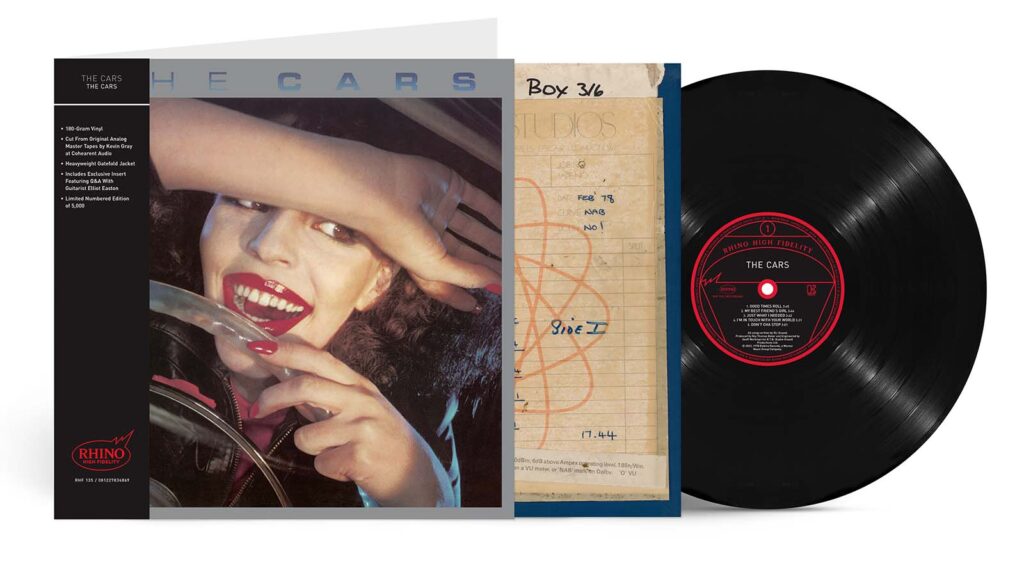
We do other albums and we typically cut from tape when we can, so it’s not like we don’t do that in other projects. And we do use Kevin on other projects, too. But for this, we just thought, “Well, what if we control every aspect of this to be the highest quality – use the tapes, use Kevin Gray, and we press these at Optimal?”
Why Optimal?
I know people are very opinionated about pressing plants, and we use a variety of pressing plants. I think we all feel like Optimal is certainly the most consistent, really quiet, clean, pressings. They just get it. It’s in Germany. There are US plants that are very revered and probably equally as good, but Bernie Grundman has told me several times he thinks that Optimal is the best pressing plant. I know Kevin Gray had mentioned that, certainly in terms of European pressing plants, Optimal is pretty much top of the game. So for us, it’s a consistency thing. And I think it shows in these records. We’re doing 180-gram and we decided that we were going to elevate the packaging to be as nice as it could be. They’re super heavyweight, tip-on, glossy, gatefold jackets.
Yeah, they make this satisfying cracking sound when you open the gatefold for the first time.
Exactly, yes. Very old school. We’re reproducing all the original artwork. Not to get too geeky, but in the case of The Cars, since there was an inner sleeve in the original record, we made that the gatefold art since the original album was a single album. And for Coltrane, which also was not originally a gatefold, we got a really beautiful photo that was used as a promo photo for Atlantic in the day.
That's a great photo.
Yeah, yeah, it’s fun to find ways to make the packaging as nice as we can. Another thing I’m particularly proud of because I’m a real tape- and a tape-box-geek, we were like, “Let’s add an insert and reproduce the tape box so people can see the actual tape that this record was cut from,” so you kind of have your own copy of the tape, in a way. Inside the insert, we’ve got notes for each of these release – notes that are from somebody involved in the actual sessions talking about an aspect of making the record.
“With Quad, it’s psycho acoustics… You can put something acoustically centered in almost a 3D way, because you’ve got that soundscape sense.”
For the Coltrane record, literally everybody involved in that session is no longer with us. But we were fortunate enough to have had producer Tom Dowd write a little bit about the Coltrane sessions for us when we did the Atlantic CD box. It’s a nice piece. He really describes what it was like to edit an Atlantic Coltrane session, how Coltane would come in and simply play for a long time before everybody else showed up to establish the mood of the session.
The goal is presenting somebody an opportunity to get inside the making of the record and what makes these records sound so great. Hopefully that’s a nice add-on for people, too. I’m super proud of how they turned out, and I’m also really thrilled with the response that we’ve gotten. It’s been all very positive, and we’ve already sold out of The Cars. That took us all by surprise.
They're beautiful sets and they sound amazing.
Thank you. When you get in the hi-fi lane, that’s a critical audience. If it didn’t turn out great, it could really blow up in your face.
The Cars and Coltrane are obviously two very different kinds of records. Is there any sort of connective tissue for the imprint going forward other than just awesome stuff from the Warner archives?
We can get creative with it. When we planned these first two, we had another title with The Cars, and we decided at the last minute to change it up because we thought well, let’s have a little variance. I think the jazz audience intersects with audiophiles to some degree, and certainly some of the Blue Note albums have really resonated with that audience. So we just thought, Coltrane is certainly the gem of our jazz catalog. I had a few higher-ups at our company who asked, “Why this and not Giant Steps or My Favorite Things? I said “We’ve done versions of Giant Steps and My Favorite Things that recently we expanded for the high fidelity lane.” I just felt, “Let’s not do something that’s been done to death.”
I’m a big Coltrane fan, and I’ve always really loved Coltrane’s Sound. I think that because it came out after he left Atlantic, people maybe think it is not a real record, but it is basically from sessions from the same time. I’ve talked to several people that feel the same way. It’s like, “Equinox,” that’s one of the best Coltrane songs ever. So I’m glad that a lot of people got that. This is a record that needs to be championed. It gets overlooked and it’s great sounding.
Kevin Gray is in high demand and super busy and it’s tough to schedule time with him sometimes. But I called him on Thursday, and I said, “Hey, any chance you could cut a Coltrane record for me by Tuesday?” He said yeah, he knew the tape. He told me later, “You know, I did that because it was Coltrane.” I said, “Yeah, it was kind of counting on that.”
You've got Ornette Coleman's catalog too, right?
We do.
There you go. Good.
We’ll just leave it at that. [Laughs.]
I'm looking at that beautiful Coleman CD box right now in my office that Atlantic put out, Beauty is a Rare Thing.
Yeah, I worked on that project. When we did the Atlantic jazz catalog, I worked really closely with Joel Dorn when we first launched. It was really fun to work with him, but that particular Ornette Coleman set was a passion project, and a cool one for people there at Atlantic.
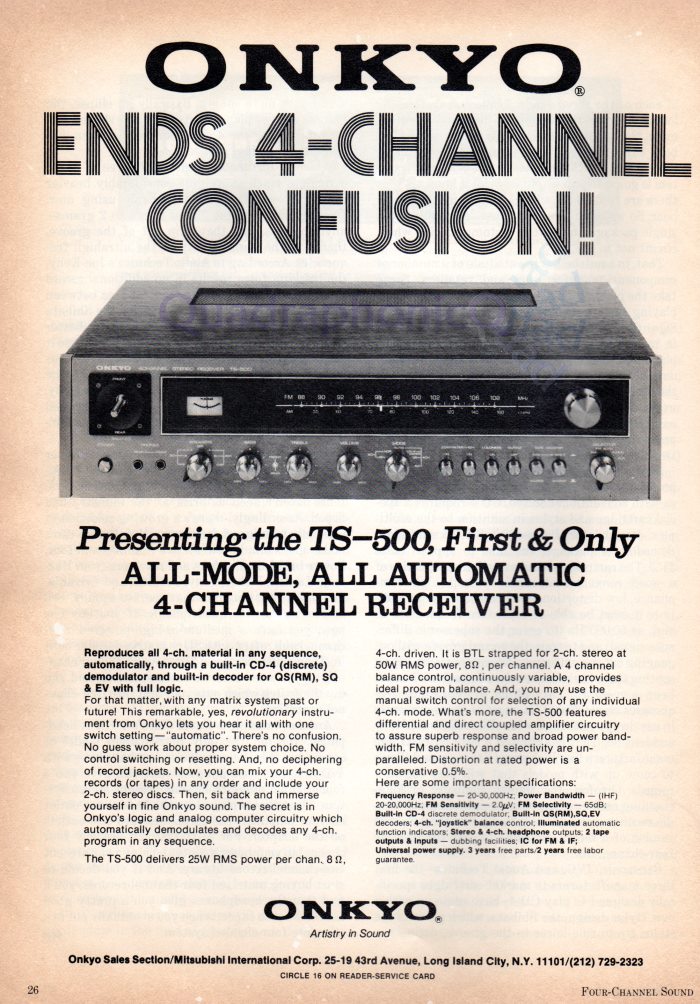
“I’m hoping with Rhino High Fidelity that people will take a chance on something. Like, ‘Well, I don’t really know this record, but if it’s in this format it’s probably going to be fun to hear.'”
Honestly, I don’t know much about Rhino’s new Quadio initiative. I was thinking it was along the lines of Dolby Atmos, but it’s focused on quadraphonically recorded albums. What's Quadio?
Quad was four speakers, two front and two rear. If you have a home theater system, it basically puts two in front and two in rear, just like Quad would be.
It’s interesting you mentioned Atmos. We’ve gone through several eras and different kinds of immersive audio. As you probably recall, in the early 2000s the SACD and 5.1 immersive audio never really resonated and took off. But if you hear stuff in the format, it can be very impressive. I think it’s always been difficult to communicate to consumers just exactly what it is. Certainly audiophiles or people more in-the-know who might have invested in those systems love it. But like I always said about 5.1 when they were really pushing it, we’re entering into an era when people are getting iPods and little headphones. They’re not sitting in a sweet spot in a room listening to a home theater system. And I have a home theater system and I had a 5.1 system and some of that stuff is incredible. If you’ve heard it, it’s really beautiful.
Atmos has a little bit better chance because it’s been adopted by Apple and Tidal and people like that. For Apple, it’s very much about hearing it in headphones. If you really get to hear Atmos in a room that’s Atmos equipped, it’s impressive. Atmos Dolby has a Theater in Hollywood where they do demos – it’s a small movie theater, basically. And it has I don’t know how many – 48 or 60 – speakers all the way around like a movie theater. Then to go into a studio that’s Atmos-equipped is also super impressive. Most people don’t get that opportunity. With Quad [quadraphonic sound] there seems to be a really fierce fan base of original Quad records and several websites and databases and things like that.
So all of the releases are from that same Quadraphonic era of the 1970s?
Yeah, Quad became a format basically from 1971 to 1976, and I can tell you two that there were things that were mixed in the format that didn’t end up getting released. We have some of that stuff in the library and we may end up doing some of that at some point. But it’s authentic to the original format.
We have it set up in the office and I’m telling you, I’ve heard these amazing Atmos mixes – Atmos is really spatial because if you mix, it’s object-based so you can move things around in a pretty amazing 3D atmosphere. And because there are speakers up top and on the side, you can move sounds around. With Quad, it’s psycho acoustics. Like with stereo, you’ve got left and right and then you’ve got something in the middle when you combine the two. That applies to Quad, too. You can put something acoustically centered in almost a 3D way, because you’ve got that soundscape sense.
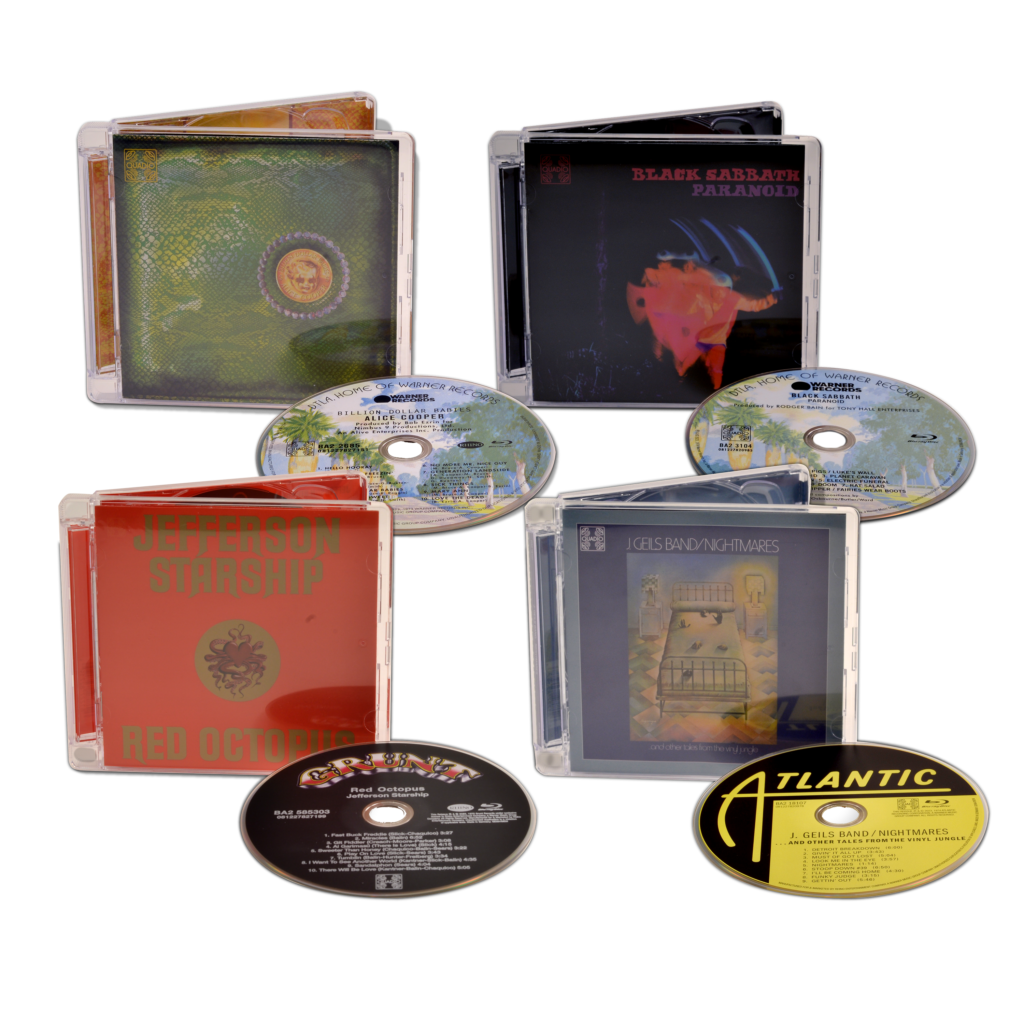
Steve Woolard, one of my A&R colleagues at Rhino, is an audio enthusiast and he’s always been kind of a Quad fanatic. And over the years Rhino has tried a few different things. When Rhino Handmade was still going, there was a greatest hits album of Aretha Franklin’s that was only ever Quad released. It had some unique versions of songs and stuff like that. They put that out but it really didn’t do that well. A few other things were done – The Doors Best of that Bruce Botnick mixed in Quad back in the day was included on a Blu-ray.
The other significant things were that Steve realized that the band Chicago had their first nine albums – other than the live album – all in Quad, which is by far the most Quad albums any artist ever had. He put together a box that called Quadio and it’s all of those albums on Blu-ray in a beautiful box that all reproduced exactly as the original albums were, with the posters and the embossed covers and things like that and it’s really beautiful. They did a run of that just to try it and it sold through almost immediately. So they did another one and it sold through.
Then, just around the time I came back to Rhino at the end of 2018, we did the Doobie Brothers that way – they had four albums in Quad – so we did a Quad box and that sold through. It occurred to me that like this Quad thing really resonates, at least on our website where we can sell direct to consumers. People seem to know about these and follow the Quad sites and immersive sites. So I suggested that we consider doing some individual titles and start a series.
Those just came out, right?
We just launched the first four, Black Sabbath, Paranoid, Alice Cooper’s Billion Dollar Babies, J. Geils’ Nightmares and Other Tales …, and Jefferson Starship’s Red Octopus. We did those all individually and the response has been unbelievable. I think people are a fan of the format and it’s a little bit like the high-fidelity thing. It caters to an audiophile and I think there are a lot of people that are fans of the format. I’m hoping with Rhino High Fidelity that people will take a chance on something. Like, “Well, I don’t really know this record, but if it’s in this format it’s probably going to be fun to hear.”






